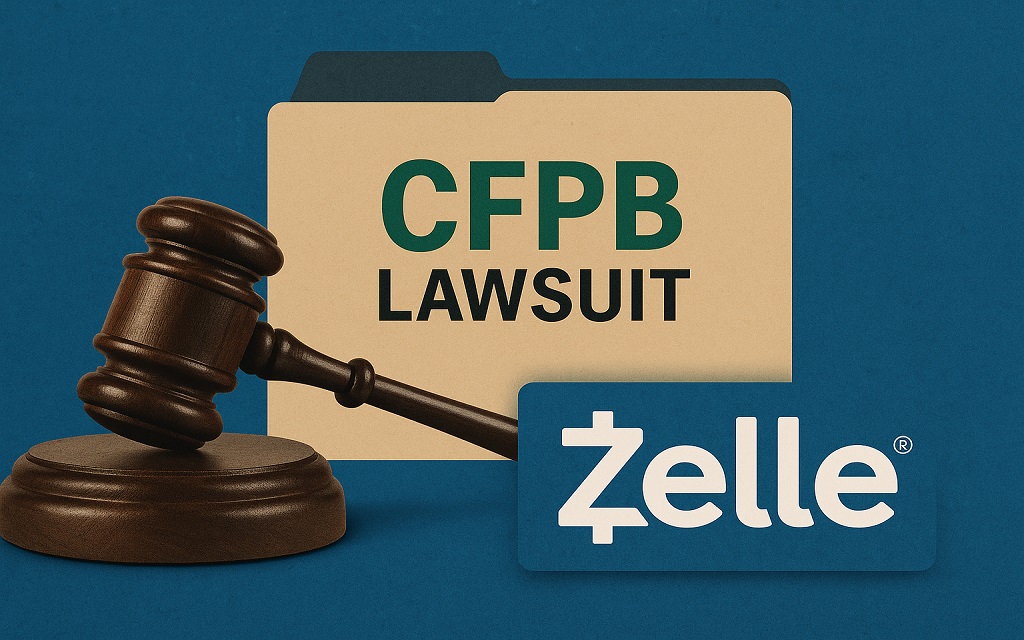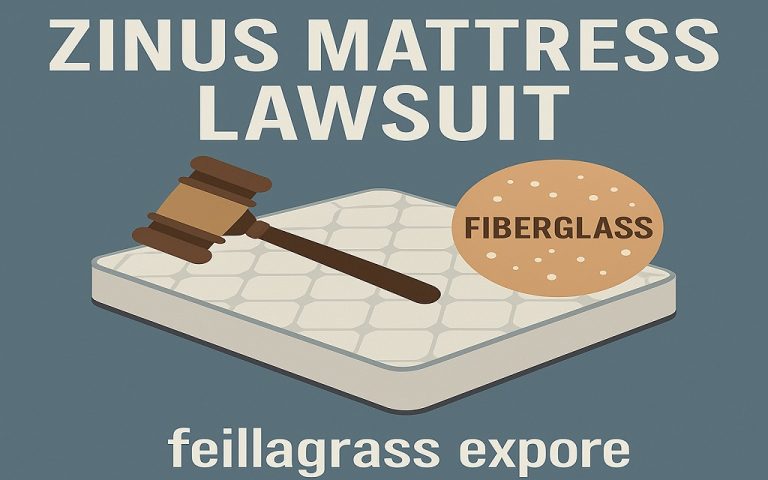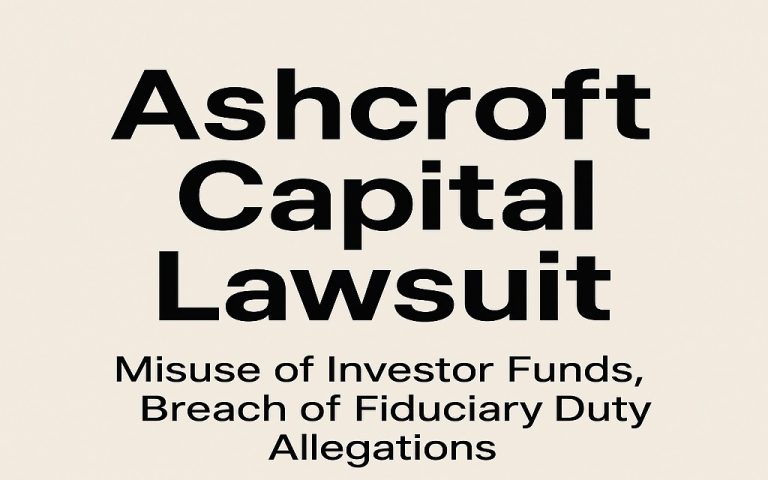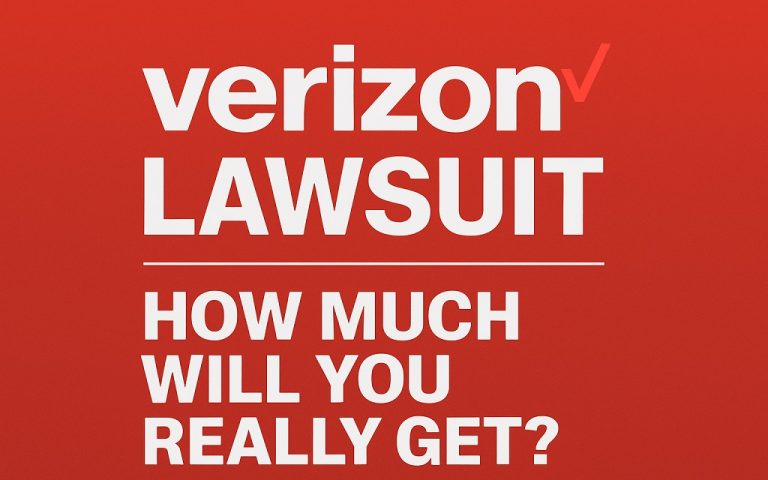Last updated: October 18, 2025
Reviewed by: Carol. Forte, JD — Financial Regulations
Reviewed on: October 18, 2025
Disclaimer: This article is information. It is not legal advice.
The CFPB Zelle Lawsuit drew huge attention from consumers and banks. The case targeted Zelle’s operator and three large banks. The Consumer Financial Protection Bureau alleged serious gaps in fraud controls. The agency also questioned the error-resolution process under Regulation E. The lawsuit landed in December 2024. The CFPB then dismissed the case in March 2025. Readers still want clear guidance and facts. This guide explains the claims, the timeline, and the outcome. It also describes your rights and options after a scam. You will learn practical steps to take. You will also learn what banks and regulators may do next. Read on to understand the CFPB Zelle Lawsuit and its lasting impact.
Overview of the CFPB Zelle Lawsuit
The case involves Early Warning Services, JPMorgan Chase, Bank of America, and Wells Fargo. The CFPB said these firms failed to protect many users. The complaint focused on rising fraud and disputed transfers. It challenged the error-resolution process under the EFTA and Regulation E. The filing date was December 20, 2024. Read the CFPB press release and enforcement action page for details:
EWS disputed the claims on day one. It called the suit “legally and factually flawed.” Read the EWS statement:
Coverage repeated a $870 million loss figure across the years. Reporters tied that number to consumer harm claims. See the AP context here:
The case ended in March 2025. The CFPB filed a dismissal with prejudice. That step closed this action. It did not end oversight across payments. Other actions continue at the federal and state levels.
Timeline of Key Events and Milestones
December 20, 2024: The CFPB sued EWS, JPMorgan, Bank of America, and Wells Fargo. Read the press release and action page:
December 20, 2024: EWS issued a response. It rejected the allegations and defended controls.
January–February 2025: Analysts reviewed Regulation E duties. Banks expanded warnings and user prompts. Advocates pushed for stronger refund policies. Commentators mapped patterns in scams and disputes.
March 4, 2025: The CFPB dismissed the case with prejudice. Coverage confirmed the filing and timing. Read reports from Reuters, Payments Dive, and Banking Dive:
Reuters: https://www.reuters.com/legal/us-cfpb-drops-zelle-case-against-jpmorgan-bofa-wells-fargo-2025-03-04/
Payments Dive: https://www.paymentsdive.com/news/cfpb-drops-fraud-suit-against-zelle-jpmorgan-wells-bank-of-america/741546/
Banking Dive: https://www.bankingdive.com/news/cfpb-drops-fraud-suit-against-zelle-jpmorgan-wells-fargo-bank-of-america/741573/
March 5, 2025: The docket shows termination. View a public summary here:
PacerMonitor: https://www.pacermonitor.com/public/case/56264964/Consumer_Financial_Protection_Bureau_v_Early_Warning_Services_LLC_et_al
Reporters also tracked shifting enforcement priorities. The legal chapter closed. The practical lessons remain vital today.
Legal and Regulatory Context: EFTA and Regulation E
Federal law protects consumers from unauthorized electronic transfers. The Electronic Fund Transfer Act sets core rights. Regulation E implements those rights in detail. Unauthorized means someone moved money without your consent. That includes stolen credentials or device takeover. Banks must investigate customer reports promptly. Institutions must correct errors when evidence supports the claim. Deadlines matter a great deal here.
Authorized but tricked transfers create challenges. A scammer can pressure a user to send money. The user taps “Send” and approves the transfer. Many banks treat that as authorized. Regulation E relief may not apply in those situations. Policies can still allow refunds case-by-case basis. Facts drive outcomes, including fraud methods and account notes. Strong documentation can help your claim. Screenshots, texts, and call logs add weight.
Clear, fast reporting remains essential. You should notify your bank as soon as possible. Keep a written record of dates and answers. Ask for the error resolution timeline in writing. Request the investigation result and reasoning. You can file a CFPB complaint if needed. Regulators review patterns and practices. Your report supports oversight and future improvements. Knowledge of these rules strengthens your position.
What Consumers Can Do After Fraud or Scams
Act fast after any suspicious transfer. Lock your banking app and change passwords. Enable stronger authentication on every account. Document everything in a simple log. Record dates, amounts, and support ticket numbers. Save screenshots from messages and apps. Keep copies of emails and texts from scammers. These items help your bank evaluate the claim.
Contact your bank through an official channel. Describe the event clearly and calmly. State why the transfer was unauthorized or induced. Ask for a written timeline of next steps. Request a written outcome after the review. You can escalate within the bank if needed. Ask for a supervisor or an escalation team. Many institutions now run dedicated scam desks. Keep notes of names and extensions.
File a complaint with the CFPB after a denial. The process is straightforward online. Attach your documentation to strengthen your case. The agency can nudge responses and track patterns. Local law enforcement can also take a report. That helps with insurance and recovery attempts. Consider legal advice for large losses. A consumer law attorney can assess options. Small claims court may also be appropriate for some cases. Take steps quickly and stay organized.
Impact on Banks, Zelle, and Future Safeguards
Fraud tactics continue to evolve. Banks and payment networks must adapt. Risk controls now emphasize identity strength and intent checks. Some apps insert friction during risky flows. Users may see more explicit, bolder warnings. Delays can appear when risk spikes. These frictions reduce loss but add wait time. Clear messaging can balance both aims.
Refund policies also keep shifting. Institutions test goodwill credits in targeted cases. Systems look at device fingerprints and session flags. Patterns help separate victims from abusers. Stronger data sharing across banks can help. Networks can flag mule accounts earlier. Regulators study these tools and outcomes. Guidance may suggest best practices across the industry.
Education remains crucial. Users need crisp prompts during transfers. Warnings should name standard scam scripts. Example messages help users spot tricks. Clear pathways also help build trust. Banks that explain rights earn loyalty. Transparency supports safer ecosystems. The legal case ended, yet the work continues. Improvements in design can cut losses. Collaboration among banks and regulators will shape results. Consumers benefit when protections become obvious and fast.
Frequently Asked Questions
Why did the CFPB dismiss the case?
The agency filed a dismissal with prejudice in March 2025. The filing ended the litigation. Officials did not publish detailed reasons. Analysts cited shifting enforcement priorities. The outcome left policy debates active.
Can I get money back after a scam?
Possibly, depending on facts. Unauthorized transfers receive stronger protections. Authorized but induced transfers face harder reviews. Banks may still offer refunds. Documentation helps a great deal. File quickly and escalate when needed.
What should I tell my bank first?
State why the transfer was unauthorized or induced. Provide dates, amounts, and screenshots. Ask for timelines and written outcomes. Keep a log of every call. Save case numbers and names.
Is Zelle remain safe to use?
The network continues to improve its controls. Banks add warnings and checks. Users still need vigilance. Confirm payees before sending. Pause when pressure appears. Use strong authentication on devices.
Where can I file a complaint?
Use the CFPB’s online portal. Attach evidence and your timeline. Submit police reports when available. Consider legal advice for large losses. Keep copies of every submission.
Conclusion
The CFPB Zelle Lawsuit ended in March 2025. The dismissal closed this case, but not the conversation. Consumers still need clear steps after fraud or scams. Banks still refine controls and education. Regulation E still protects unauthorized transfers. Documentation and speed still matter. Users should report issues fast and in writing. Escalations and CFPB complaints remain available. Future safeguards will keep evolving. Clear warnings and smarter friction can reduce loss. Strong identity checks can block bad actors earlier. You now have a practical map. Use it to protect your money. Share it to help others understand the CFPB Zelle Lawsuit and its impact.
Author and Editorial Standards
About the Author
Lynn Fisher covers consumer payments and regulation. Experience includes multi-year reporting on bank dispute processes.
Editorial Standards
We verify claims against primary sources and reputable outlets. We update content when facts change. We correct errors transparently.




